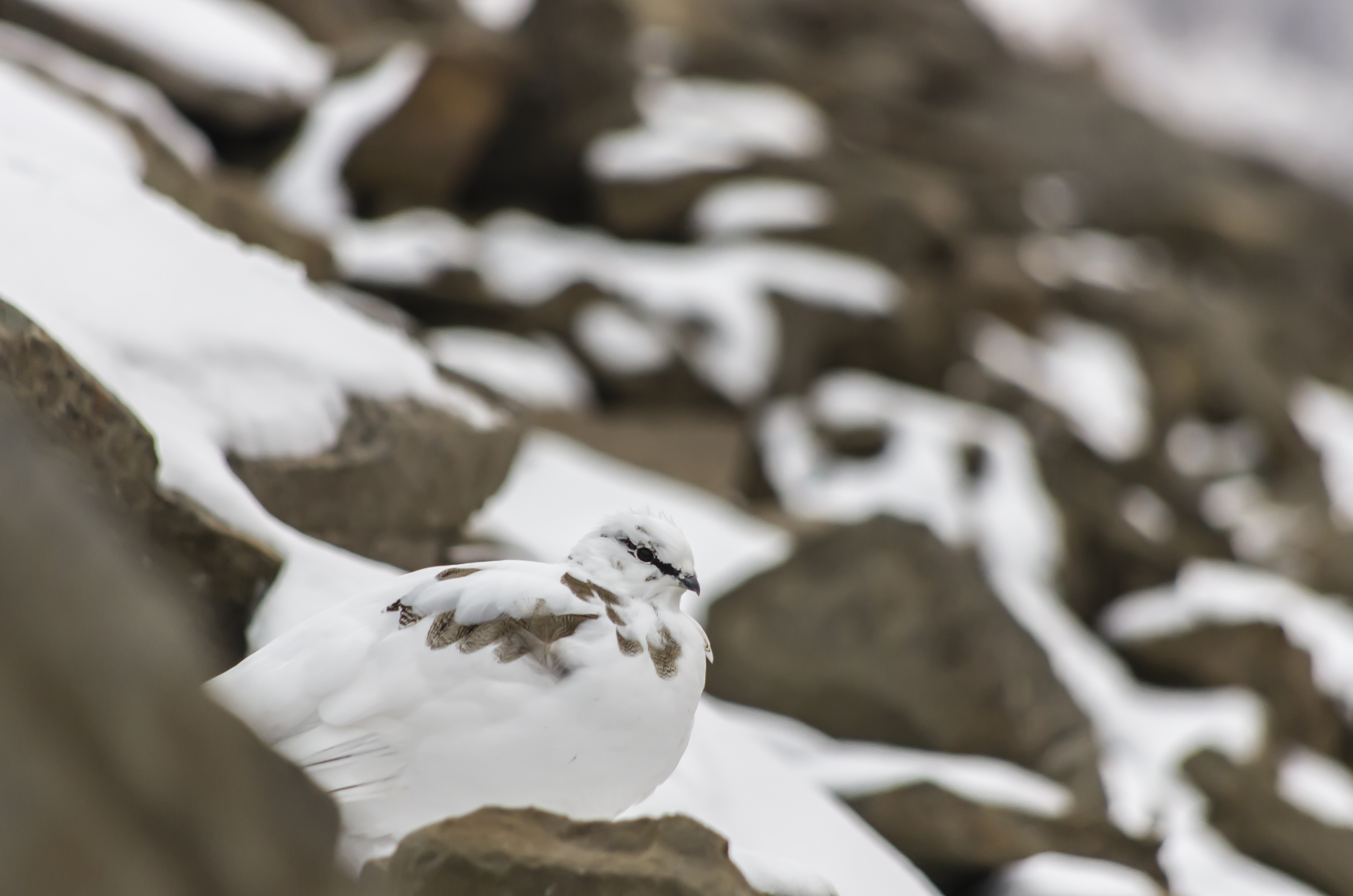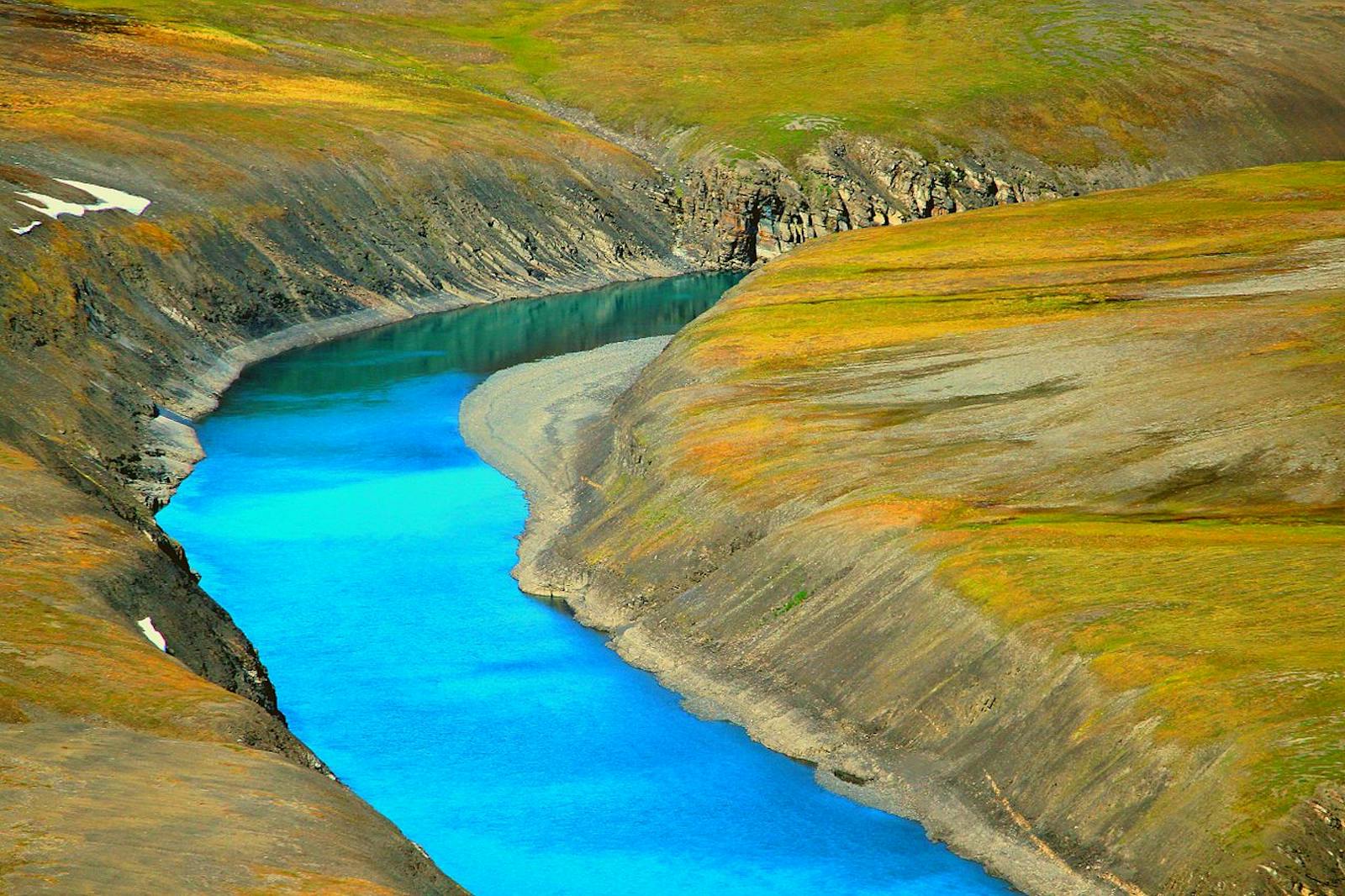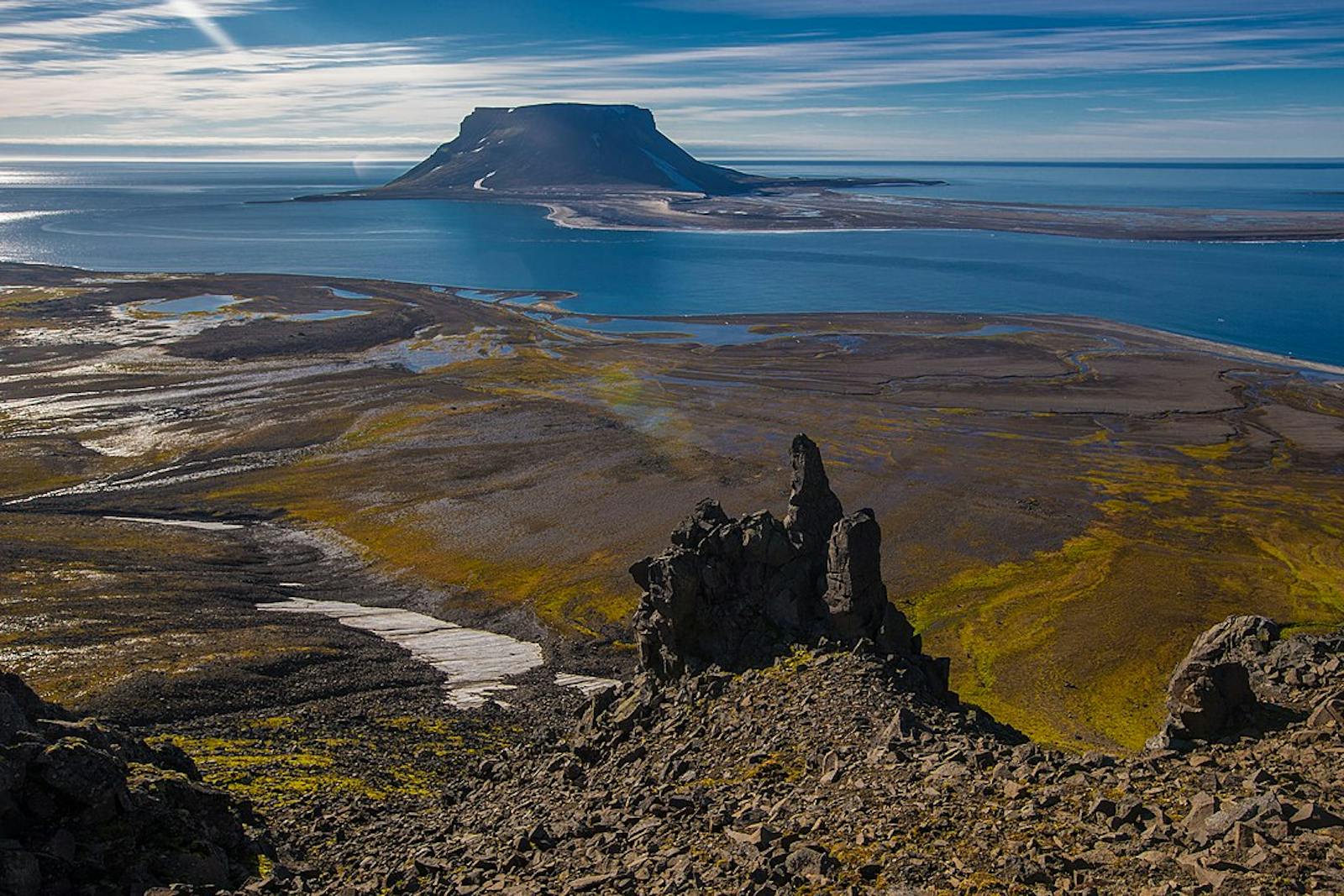Russian Arctic Desert
The ecoregion’s land area is provided in units of 1,000 hectares. The conservation target is the Global Safety Net (GSN1) area for the given ecoregion. The protection level indicates the percentage of the GSN goal that is currently protected on a scale of 0-10. N/A means data is not available at this time.
Bioregion: Russian Arctic Desert Islands (PA1)
Realm: Subarctic Eurasia
Ecoregion Size (1000 ha):
16,182
Ecoregion ID:
778
Conservation Target:
39%
Protection Level:
10
States: Russia, Norway
Strewn across the Barents and Kara Seas, these islands of ice and rock are places of extremes. Summer skies never darken as the midnight sun reigns supreme, whilst winter is enveloped by a permanent polar night, illuminated by the dancing flares of the Northern Lights. Cliffs are raucous with scores of seabirds, whilst a myriad of marine mammals swim the frigid waters, including walrus, narwhal, and bowhead whale. The emblematic polar bear is a powerful predator with a penchant for swimming, but its paradise of sea and ice is increasingly under threat as the planet warms.
Four major archipelagos lie within this region of the High Arctic. Svalbard is a Norwegian territory, whilst the Russian Federation has sovereignty over Severnaya Zemlya, Franz Josef Land, and Severny Island, the Northern part of the Novaya Zemlya archipelago. An Arctic climate promotes long, cold winters and very short summers, and no month averages over 10°C. Glaciers abound within a rocky landscape that blooms with mosses, lichens, and low-growing herbs.
The few plants species that can survive here do so in flourishing abundance: ice grass, Regel’s chickweed, and mountain pincushion are amongst several species to have their greatest global population across these archipelagos. Plants exhibit a host of adaptations to wind and cold. Many have evolved furry leaves or clumpy growth for insulation, whilst dwarf arctic birch, usually a bush, ducks the wind on Svalbard by clinging to the ground as a creeper.

The flagship species of the Russian Arctic Desert ecoregion is the Svalbard rock ptarmigan.
Svalbard harbors the endemic Svalbard poppy and around 10,000 Svalbard reindeer; due to a lack of natural predators, this small, endemic subspecies of tundra reindeer characteristically lacks wariness or agility. The Svalbard ptarmigan is endemic to Svalbard and Franz Josef Land, and Severnaya Zemlya hosts the world’s largest colonies of ivory gull, a bird that is endemic to the High Arctic.
Atlantic walrus live in the waters of Svalbard, Franz Josef Land, and Severny Island, whilst Severnaya Zemlya is home to the Pacific walrus. Polar bears number around 6,000 individuals across these archipelagos; one of the world’s largest predators, they are reliant on seals for prey, particularly bearded and ring seals.
The only commercial activity that has survived for more than a hundred years on Svalbard is mining, largely for coal. All settlements on the archipelago have histories rooted in this industry, including the research base of Ny-Ålesund on Spitsbergen, the world’s northernmost permanently inhabited settlement. For most of the 20th century, Franz Josef Land and Severny Island were closed military bases, the latter being the site of extensive nuclear testing.
In 1961, it witnessed the biggest manmade explosion in global history by the hydrogen bomb Tsar Bomba, though studies have not yet shown lasting environmental impacts of radiation on the island. Severnaya Zemlya lacks any human population, other than at the Prima Polar Station. Many islands in the Svalbard archipelago are protected as part of the Nordaust-Svalbard Nature Reserve, and in the Russian Federation, protection is offered by the immense Russian Arctic National Park.
The most prevalent threat to Arctic biodiversity is climate change. The resulting loss of sea ice would weaken links between the archipelagos, and restrict the ranges of species dependent on ice cover, such as the polar bear. Additionally, it would make currently pristine, remote regions much more accessible and exposed to human activity.
Other threats include shipping, illegal hunting and fishing, and a burgeoning tourism industry.v Norway’s Svalbard Environmental Protection Act is a strict legislation to safeguard pristine wilderness and cultural heritage; a ban on ships carrying heavy bunker oil from entering Svalbard’s waters has already been implemented. The past decade has seen the Russia Federation fund a cleanup of tens of thousands of tons of Soviet-era industrial waste from Franz Josef Land.
The priority conservation actions for the next decade will be to: 1) ensure research into the effects of climate change is incorporated into species and habitat management plans across the region; 2) implement a specific Act concerning Arctic environmental protection in the Russian Federation; and 3) enforce legislation for obligatory scientific research support for every Arctic project.
Citations
1. Callaghan, T.V., Björn, L.O., Chapin Iii, F.S., Chernov, Y., Christensen, T.R., Huntley, B., Ims, R., Johansson, M., Riedlinger, D.J., Jonasson, S. and Matveyeva, N., 2005. Arctic tundra and polar desert ecosystems. Arctic climate impact assessment, 1, pp.243-352.
2. Ministry of Climate and Environment. (2016). Norway’s national biodiversity action plan.
3. Coulson, S.J., Convey, P., Aakra, K., Aarvik, L., Ávila-Jiménez, M.L., Babenko, A., Biersma, E.M., Boström, S., Brittain, J.E., Carlsson, A.M. and Christoffersen, K., 2014. The terrestrial and freshwater invertebrate biodiversity of the archipelagoes of the Barents Sea; Svalbard, Franz Josef Land and Novaya Zemlya. Soil Biology and Biochemistry, 68, pp.440-470.


.png?auto=compress%2Cformat&w=300)

